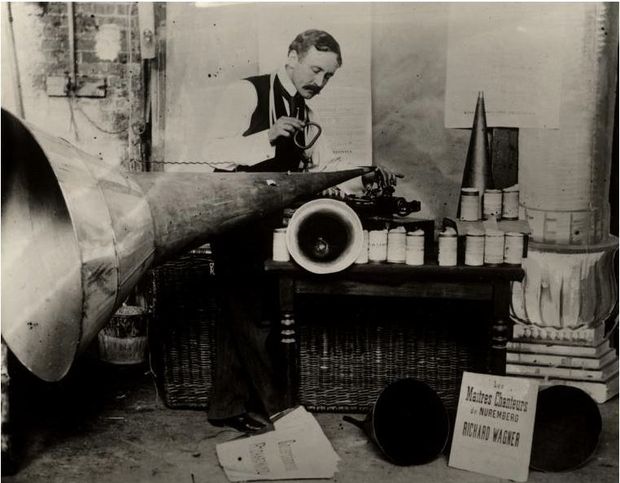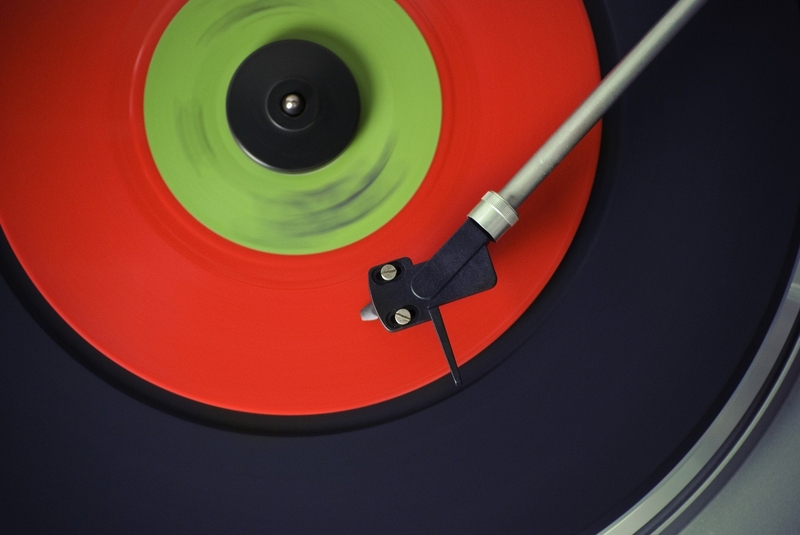Giving Classical the Boot(leg): A Brief History of Illicit Recording
Βy Jennifer Gersten
For certain music enthusiasts, of all concert souvenirs, the bootleg recording is the most covetable. Neither autographed Big Gulps nor commemorative T-shirts exceeding the cost of one’s wardrobe can compete with the illicit pleasure of listening to performances exactly as they transpired, enlivened by the occasional sneeze from the mezzanine. During the rock era, the bootlegging craze was put into motion by Great White Wonder, the unauthorized Dylan vinyl released by two devotees in 1969. But classical music, long its own ground for renegade recordings, is where the practice got its wings.
The term “bootlegging,” inspired by smugglers who transported their contraband inside their shoes, entered popular parlance in the Prohibition era, when the 18th Amendment prohibiting the sale and consumption of alcohol exploded a sub-rosa network of liquor distribution. Around this time, the word also began to be used in musical contexts to describe illegal copies of legitimate recordings, and eventually evolved to become the province of devotees hoping to capture and share their idols’ performances.

Metropolitan Opera librarian Lionel Mapleson recording backstage in 1901. (Metropolitan Opera Archives / Library of Congress)
In 1901, Lionel Mapleson, the Metropolitan Opera’s librarian, became the first bootlegger after recording a concert on his Bettini micro-recorder without asking the performers’ permission. Over the next three years, he went on to make hundreds of recordings, most of abysmal quality. Here’s a cylinder recording of Johanna Gadski performing live at the Met in 1902:
But Mapleson’s clandestine operations preserved the era’s most legendary voices, as well as established the potential for others to do some recording of their own. In Bootleg: The Secret History of the Other Recording Industry, author Clinton Heylin writes that, by 1951, the proportion of illegal recordings in classical music had exceeded that of all other genres. That year, even America’s then-largest record label, Classic Editions, embarrassed itself by accidentally releasing a bootleg of its own when a recording of Verdi’s A Masked Ball purportedly produced in Italy turned out to be a recorded Metropolitan Opera broadcast.
Bootlegging continued to grow through the ’60s and ’70s, blowing raspberries at the record industry’s incipient attempts to curtail it. Owing to a relative lack of exposure, they circulated often without much legal fuss. Opera in particular attracted prolific bootleggers, Heylin writes, who welded their talent for business to their love for the genuine article — the concert exactly as it transpired. “We never doctor a sour note if the singer sang it that way,” one anonymous bootlegger, who operated his own bootleg label, asserted. “We want to document what really happened.” While the bootlegs themselves had no legal credibility, many a connoisseur considered the performances they captured to be more authentic than label releases, as they showcased artists in their truest forms.
Some of them were even exclusive, never having been authorized for official release. In Bootleg, a 1969 Wall Street Journal review quotes Montserrat Caballé as stating, “‘Many people come back to speak to me after a performance, and I have noticed that more and more of them carry briefcases or small suitcases, and I sometimes get the impression that everyone in the audience is recording the performance.’” The writer continues, “It’s easy to buy a pirated classical record. Whereas a reporter had to visit several record stores to find one that had the new Dylan record.”
Heylin says that Caballé’s American debut in Lucrezia Borgia was originally released as a bootleg, and postulates that the recording might be the most famous bootleg of them all. We found that very recording on YouTube, but the user hasn’t said it’s a bootleg so … caveat emptor?
The late ’80s and ’90s saw many an industry attempt, some fruitful, to strangle the black market, but with the Internet came yet another open season. Recordings that once changed hands via vinyl or CD now circulate to millions via streaming platforms like YouTube, which remain havens for illegal audio and video. Chances are your favorite classical performance is living somewhere on the internet.
Those nursing any nostalgia for the black market hard-copy still have options, too: In 2014, The Guardian’s classical music critic Tom Service recounted finding a trove of classical bootlegs in Tower Records (the last branch standing, in Tokyo’s Shibuya district), including performances by the likes of Carlos Kleiber, Maria Yudina and Guido Cantelli. Where there’s an above-ground, there’s probably an underground — if you know where to look.
